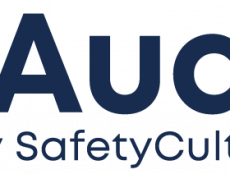
Articles
Editor’s Picks
Can eLearning Help Reduce Workplace Burnout?
By Sherman Morrison
July 02, 2019
You arrive to your workplace for another day on the job, but things aren’t right. You feel exhausted even though you slept reasonably well. You’ve got lots of work to plow through but you lack motivation. The mere thought of work makes you feel frustrated. You try to get into your work but you feel like you just can’t focus properly. And you’ve been feeling this way for weeks. You could be suffering from workplace burnout. It’s not just in your head, either. The World Health Organization (WHO) recently brought new attention to this problem. Is there a role for eLearning to play in addressing workplace burnout?
WHO Revises Workplace Burnout in ICD-11
ICD-11 is now out (11th revision to the International Classification of Diseases) and it contains a new, more detailed description of what the WHO calls burn-out. Yes, the WHO hyphenates it in their materials, but in the U.S., we write it as one word. It’s important to understand, however, that just because workplace burnout appears in IDC-11, it doesn’t mean it’s a “disease” in the technical sense. It is not considered a medical condition. Instead, it is described as an occupation phenomenon. As such, it is included in the chapter of the document that has to do with various factors that affect people’s health even though they aren’t technically illnesses. Here’s how burnout is described in IDC-11:
Burn-out is a syndrome conceptualized as resulting from chronic workplace stress that has not been successfully managed. It is characterized by three dimensions:
- Feelings of energy depletion or exhaustion;
- Increased mental distance from one’s job, or feelings of negativism or cynicism related to one’s job; and
- Reduced professional efficacy.
Burn-out refers specifically to phenomena in the occupational context and should not be applied to describe experiences in other areas of life.
Although burnout was included in ICD-10, the description was a bit vaguer than the one provided in ICD-11. Perhaps even more importantly, the WHO has announced it is going to develop evidence-based guidelines for mental well-being in the workplace.
Who Is Responsible for Burnout?
People who study workplace burnout are welcoming the new attention to what has become a serious problem for many people. Some also think employers should feel a sense of responsibility to monitor conditions in the workplace, such as the following:
- Is there a sense of community in the workplace?
- Are there strong social relationships?
- Is the environment collegial?
- How burdensome is the workload?
- Do workers have a sense of agency in the workplace?
- Can people achieve a healthy work-life balance in the company?
Workplace burnout hasn’t received serious or widespread attention. This might be in part because people think of it as an individual problem people have to just deal with on their own. Then again, when it appears to be rampant in specific industries, it can be worrisome. This was what happened with air traffic controllers back in the 1980s and 1990s. Word got out how stressful the job was and actions were taken. After all, everyone wants the people in charge of keeping planes from crashing into each other to be fully engaged.
A more recent focal point is workplace burnout among physicians. People are understandably concerned that the people providing their medical care might be suffering from burnout. And yet very little in the way of good research is even happening on the topic. One recent survey found 63% of nurses report burnout.
Some even fear that an entire generation could suffer from the condition, as Anne Helen Petersen wrote in How Millennials Became The Burnout Generation. They’ve been groomed from day one to be constantly “on” when it comes to work, and it’s beginning to take a toll. Given the prominence of eLearning throughout the corporate landscape, it seems reasonable to wonder if it can play a role in reducing workplace burnout.

eLearning Courses About Burnout and Related Topics
If you’re interested in finding courses that are about managing stress or avoiding burnout in the workplace, it’s a bit harder to do than you might think. If you attempt searches using combinations of “eLearning” and “burnout” or “stress” you’ll see why. What comes up are all the articles geared towards learning professionals for how they can keep their learners engaged and avoid eLearning burnout. Finding eLearning materials to help workers manage stress and avoid burnout takes a different search tactic. Using “stress reduction eLearning course” yields the following:
- Unum (UK): Managing Stress in the Workplace. Free online stress workshop with six interactive modules that include quizzes, videos, PDFs and discussion tools to cover topics such as what is stress, why manage it, how to recognize the signs of stress, managing stress-related problems, your role as a line manager, and keeping you and your team healthy.
- Total Success Training (UK): Stress Management – Understanding Stress. This free course focuses on understanding stress and your responses to it along with using several different new stress management techniques.
- Palouse Mindfulness: Mindfulness-Based Stress Reduction (MBSR). Assembled by certified MBSR instructor Dave Potter, this free eight-week course would be of interest to anyone who likes the idea of “mindfulness” as found in the works of Jon Kabat-Zinn. If you do a search on MBSR (spelling it out), you’ll find similar courses, but most of them won’t be free.
- Carole Spiers Group (UK): This is a full-blown workplace stress and wellbeing consulting firm, but they also offer a free Six-Week Lifestyle Management eCourse for learning how to live stress-free.
- Highfield e-Learning (UK): Stress Management Short Course is only 20-40 minutes but covers a good deal of ground related to understanding and managing stress.
- Verztec Learning (Singapore): Stress Relief and Stress Reduction. This is a one-hour course costing $49.99 per user license. The little preview snippet wasn’t especially compelling.
The above are just a few highlights from the first couple of pages of search results. None of them looked particularly impressive. It’s interesting to note how many of them come from the U.K. Are they more concerned about workplace stress in the U.K. than the U.S.? Another approach to finding potential stress-related eLearning courses is to go to some of the larger course providers and see what’s available. Here’s a summary:
- Udemy: 764 results returned when searching on the single term of “stress,” and most of the results appear to be right on track for workplace stress or stress in general. The wide range of offerings are priced from $19.99 up to $199.99. You can filter results in different ways to see what bubbles to the top based on ratings, price, duration, etc.
- LinkedIn Learning (Lynda): 3,100+ results when searching on “stress,” or 1,400+ for “stress management.” Search results can be filtered a number of ways to fine-tune the results, including content type, skill level, release date, duration, and so on.
- Coursera: Using the same single search term of “stress” yielded only 46 results, not one of which was on-point in terms of reducing or managing workplace stress. How is that possible? Using “stress management” didn’t improve the results at all.
- Skillshare: This site doesn’t even let you conduct a search of courses without first signing up, which feels a little desperate. But you can see examples of courses in different categories, and the productivity category did have one related to stress called Burn Your Burnout: Strategies to Fight Stress and Burnout in Your Life and Work, but the short introductory snippet was a total snooze-fest.
Other sites are more focused on specific kinds of skillsets or knowledge areas and yielded nothing on the topic, including Simplilearn, QuickStart, Udacity, Khan Academy, Pluralsight, Treehouse, Codeacademy, and Code Avengers.
What was missing from all these search results was something that would probably be the most helpful – microlearning courses for reducing stress. Focused searching on that topic yielded the following result:
Cortex Leadership Consulting: Stressed for Success. This is a two-week microlearning quick course that comes with a $297 price tag. It would have to be very good indeed to justify the price.
And that was it – a single result for microlearning stress reduction content. There is a clear opportunity here for some enterprising eLearning professional to fill a niche – hopefully without stressing over it too much. In general, the eLearning offerings available on stress reduction vary widely, and none are specifically positioned to take advantage of the growing concern over the phenomenon of workplace burnout.
Featured Image: Eutah Mizushima, Unsplash.









No Comments